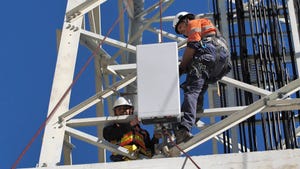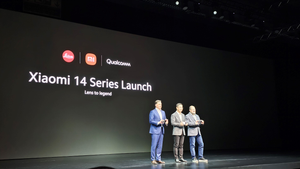CommScope Takes Aim at Cable Network Virtualization, Low-Latency DOCSIS
Following Arris acquisition, CommScope brings new wares and technologies to this week's Anga Com event in Germany.

Roughly two months after sealing its deal for Arris, CommScope is entering this week's Anga Com event in Germany with a batch of next-gen tech largely focused on the HFC network.
Among those advances, CommScope's Arris division said it will show off a new, virtualized form of its converged cable access platform (CCAP) core, some early handiwork centered on low-latency DOCSIS, and a software-based way to tweak how cable operators are allocating upstream and downstream capacity.
Arris's virtualized CCAP core is initially set to run on the company's flagship CCAP chassis, the E6000, but will also be capable of supporting commercial off-the-shelf servers as cable operators begin to move ahead with distributed architectures that employ a new class of remote PHY nodes, said Kevin Keefe, SVP and segment leader for Network & Cloud at CommScope.
CommScope said trials of the Arris vCore are underway at unnamed cable operators, with "significant deployments" expected later in 2019.
Keefe said those trials are occurring with MSOs in various regions, though Europe appears to be on a "bit of a fast path" with virtualization at the moment, he said.
The vCore is taking shape as both major and midsized operators begin to explore and deploy virtualized CCAPs. Among recent moves in the US, Comcast has vCCAP work underway with Harmonic, and, according to industry sources, plans to offer that product to other MSOs under a syndication model further down the road.
CommScope will also focus on low-latency DOCSIS at Anga Com, where it will show IP video running alongside traditional QAM video over an EPON channel at 10 Gbit/s. Like it is for other types of networks, including 5G, the low-latency aspects of DOCSIS will focus on apps such as online gaming, virtual reality, and, eventually, autonomous vehicles.
Update: CommScope on Tuesday (June 4) updated the details of its low-latency demo, noting that it is showing a comparison of gaming applications combined with regular service flows versus the same games running over a "prioritized low-latency flow."
CableLabs has not yet released any new DOCSIS 3.1 specs that apply new low-latency techniques, but CommScope's demo this week will target latencies of 1 millisecond, well below DOCSIS's typical range of 25 milliseconds to 35 milliseconds, the company said.
In another future-facing demo, Arris will also show a software-configurable Frequency-Division Duplex (FDD) system that will enable cable operators to adjust their upstream and downstream splits in the spectrum via software rather than via manual, in-field adjustments. That could factor in as cable operators start to use more spectrum for upstream capacity. For example, in North America, operators typically use a sub-split for the upstream that lives in the 5MHz to 42MHz range, but are starting to look at a high-split that would expand upstream capacity to 204MHz.
With Soft FDD in place and the ability to change or reconfigure how the spectrum is being split between the upstream and downstream, MSOs could avoid rolling out trucks and having to manually swap out a new module into the node. "We think this is huge for the network … a very powerful tool," Keefe said.
But Soft FDD isn't ready for prime time, as it's still in development (and it's not a CableLabs spec, at least not yet anyway). Plus, the customer premises equipment, such as a cable modem or set-top box, would also need to support the operator's new upstream/downstream spectrum split. And while Soft FDD won't require a new node, the existing node would still have to be touched to support Soft FDD. CommScope envisions that Soft FDD could be enabled in a node with the introduction of a new module that could be snapped in, Keefe explained.
Ties to '10G'
CommScope said the combined work being shown at Anga Com this week ties into the cable industry's broader vision for "10G," a brand given to efforts to enable symmetrical 10Gbit/s speeds on HFC, fiber and even wireless networks.
Under a new 10G timeline presented by CableLabs, DOCSIS 3.1 is now considered 10G version 1, with future versions (10Gv2 and 10Gv3) set to add elements such as Full Duplex DOCSIS, low-latency capabilities, and expanded spectrum DOCSIS (up to 1.8GHz and possibly beyond).
CommScope also announced some customer news -- Vodafone Germany is working with the vendor on a national upgrade for 1-Gig service, and Sasag of Switzerland is the first European operator to announce plans to upgrade its entire network for D3.1 in the upstream (for speeds up to 100 Mbit/s) and downstream (up to 1 Gbit/s).
Related posts:
— Jeff Baumgartner, Senior Editor, Light Reading
Read more about:
EuropeAbout the Author(s)
You May Also Like












